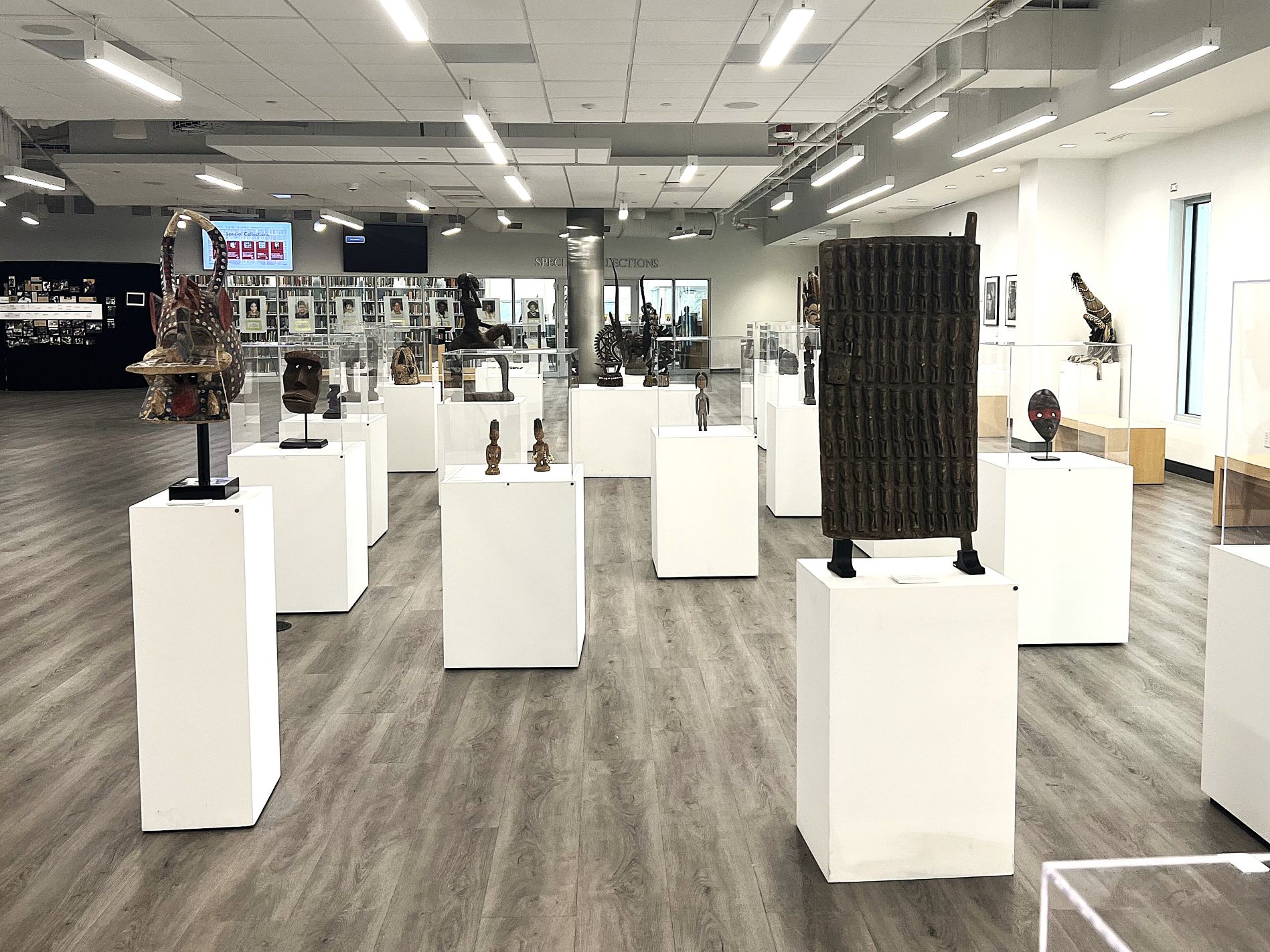The Traditional African Art Gallery
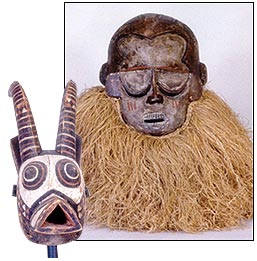 Dr. John Biggers, world-renowned artist, established the Art Department at Texas Southern
University in 1949. One of his major goals for the University was to develop a collection
of traditional African Art. Such a collection would enable the students at Texas Southern
to develop a "perceptual growth" and cultural sensitivity to African art.
Dr. John Biggers, world-renowned artist, established the Art Department at Texas Southern
University in 1949. One of his major goals for the University was to develop a collection
of traditional African Art. Such a collection would enable the students at Texas Southern
to develop a "perceptual growth" and cultural sensitivity to African art.
In the early 1970s, S.W. Mothershed, director of the University Library, used funds
from the budget allocated for art books and library auxiliary funds to buy a few pieces
of African Art. Mr. Mothershed also spearheaded the building of the Central Library
African Art Gallery that presently houses the African Art Collection. When the collection
was established during the 1970s, fewer than one dozen collections of traditional
African art were located at historically Black colleges and universities. The Collection
contains 247 pieces of art from West Africa, Central Africa, and East Africa.
Heartman Collection
The Heartman Collection contains over 11,000 books, pamphlets, slave narratives, journals,
musical scores, and other documents relating to the black experience in the United
States and the world. The University acquired the original collection from Heartman
in 1948 for the sum of $20,000. The Heartman Collection is named for Charles Frederick
Heartman, a well-known antiquarian book dealer. One of his strongest legacies is in
the field of Afro-Americana. During his lifetime, he developed two Heartman Collections;
one collection is at Xavier University in New Orleans and the other is at Texas Southern
University and is considered the largest African American collection in the southwest.
The Department of Special Collections continues to purchase books that are culturally,
political and socially landmark works that interpret and preserve the African American
experience. The collection now includes over 22000 volumes.
Archives
Houston League of Business and Professional Women
The official Records of the organization including reports, histories, bylaws, programs,
videotapes and photographs.
Texas Southern University Archives
Dr. Charles Law was appointed as University Archivist in 1977. At that time, he published
the first bibliography of university documents. In 1979, Dr. Law developed a proposal
for the establishment of a University Archives at Texas Southern University. Since
that time, the archives in the library has housed the official records of Texas Southern
University. The records include board meeting minutes, presidential papers, yearbooks,
dissertations, photographs and other documents related to the history and development
of the institution.
NEW Special Collections is now included in the Texas Historical Commission's YouTube Channel.
Check out the videos.
Manuscript Collections
Barbara Jordan Papers
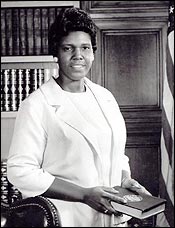
Barbara Jordan (1936-1996) was the first African American woman to serve in the Texas
State Senate; she was the first African American U.S. Representative from Texas and
the first African American to deliver a keynote speech at the Democratic National
Convention. Jordan donated her papers to Texas Southern University in 1978. When Jordan
attended Texas Southern University 1952-1956, she was active on the Debate Team and
graduated magna cum laude.
Barbara Jordan Collection Finding aidAnimated Barbara Jordan timelineBarbara Jordan Archive
Curtis Graves Papers
Curtis Graves (1938) was the first African American to serve in the State House since
Texas Reconstruction. Graves served in the House 1966-1972. Graves graduated from
Texas Southern University with a BBA in 1962. Curtis Graves Papers Finding Aid
Ollington E. Smith Papers
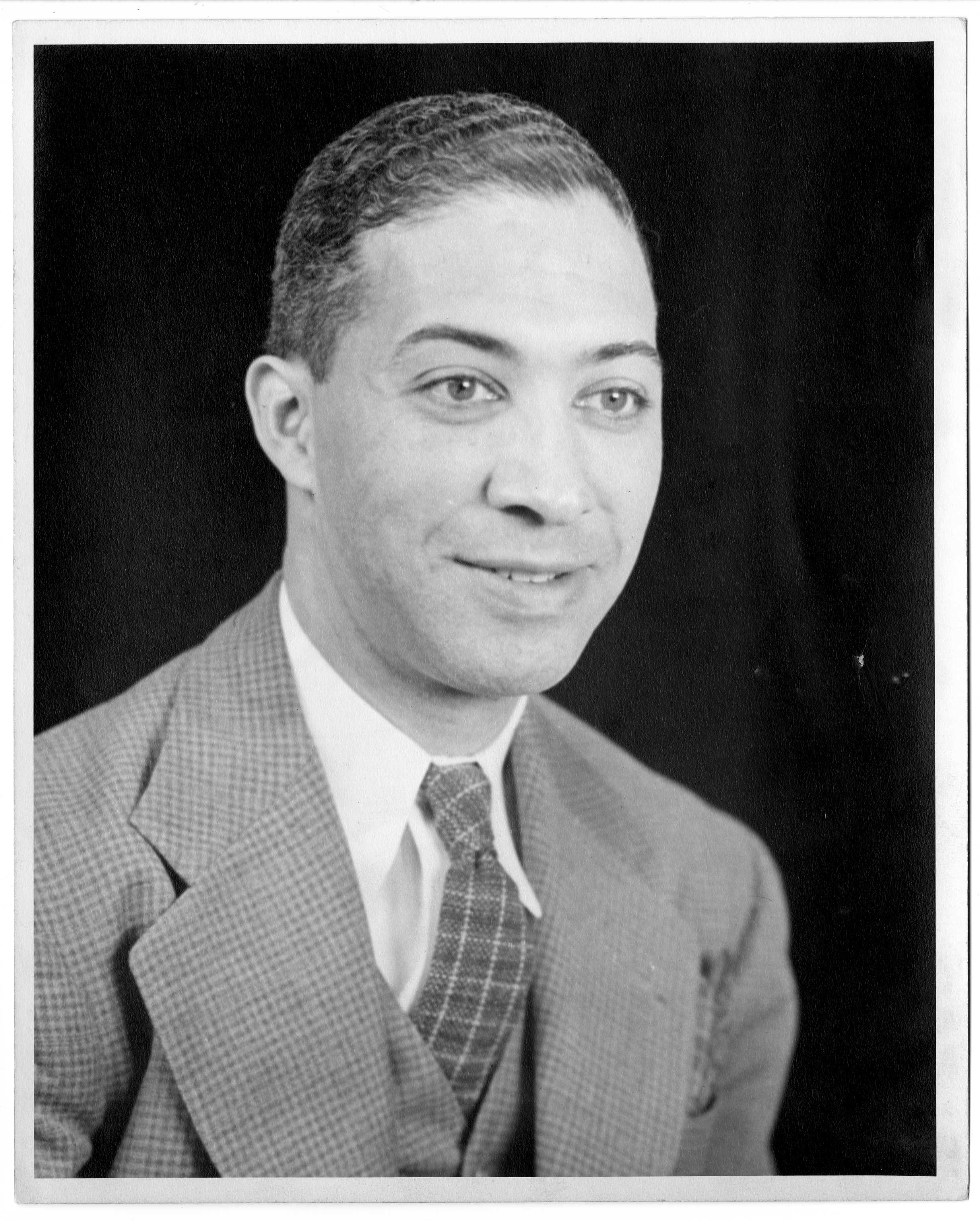 While on faculty at TSU, Smith served as chairman of the English Department and was
the first chairman of the Department of Speech and Drama. A specialist in World Literature,
Smith was a noted theater director who established the Department of Theatre, the
Texas Southern University Players, and the Little Theater. The Ollington E. Smith
Papers consists of reports, syllabi, lecture notes, and departmental recommendations
relating to the evolution of the Departments of English, Speech and Drama; the Texas
Southern University Players repertory group; information on play production, play
programs, costume and set designs (including some original drawings and sketches);
the Fine Arts Festival; photographs of various play productions directed by Smith;
programs from Morgan State Players productions; and an extensive collection of Playbills
from 1934 to 1959. Ollignton E. Smith Papers Finding Aid
While on faculty at TSU, Smith served as chairman of the English Department and was
the first chairman of the Department of Speech and Drama. A specialist in World Literature,
Smith was a noted theater director who established the Department of Theatre, the
Texas Southern University Players, and the Little Theater. The Ollington E. Smith
Papers consists of reports, syllabi, lecture notes, and departmental recommendations
relating to the evolution of the Departments of English, Speech and Drama; the Texas
Southern University Players repertory group; information on play production, play
programs, costume and set designs (including some original drawings and sketches);
the Fine Arts Festival; photographs of various play productions directed by Smith;
programs from Morgan State Players productions; and an extensive collection of Playbills
from 1934 to 1959. Ollignton E. Smith Papers Finding Aid
African American Commemorative Coin Collection
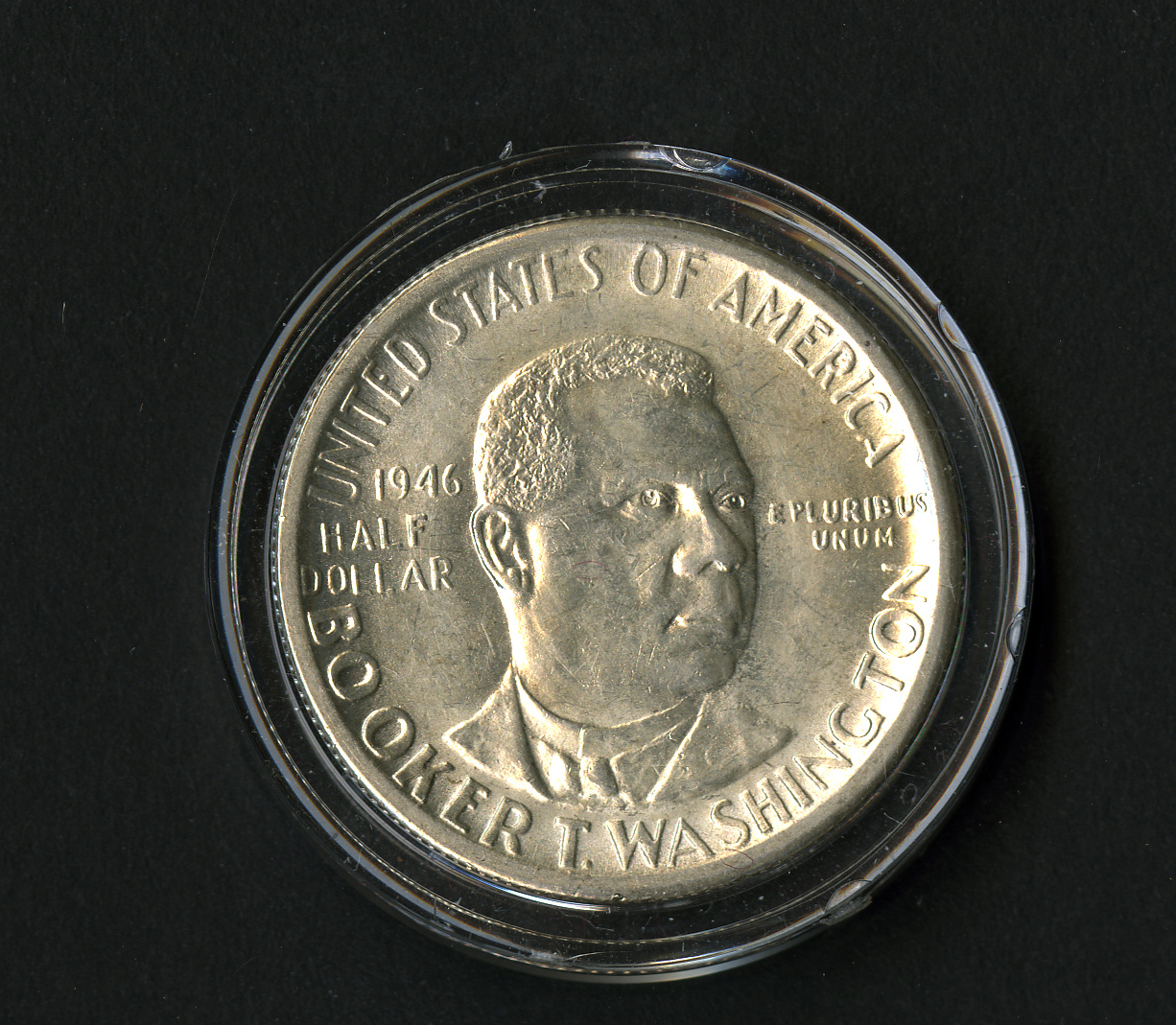 This is a collection of 11 African American commemorative coins, purchased by the
Robert J. Terry Library from a private collector ca. 2009. The coins feature notable
African American figures and events in African American history, including Booker
T. Washington, Rosa Parks, Duke Ellington, and George Washington Carver. Numismatics
is the scientific analysis and study of money and the uses to which people have put
money throughout history. Coin collectors use the word "numismatics" when speaking
specifically of the study of coins. A wider and more correct definition includes the
study and collecting of all money-related items such as banknotes, tokens, medals,
bullion rounds, etc. The study of coins can be useful to historians as they can provide
historical, social, political and economical context for civilizations, cultures,
or specific persons or events.
This is a collection of 11 African American commemorative coins, purchased by the
Robert J. Terry Library from a private collector ca. 2009. The coins feature notable
African American figures and events in African American history, including Booker
T. Washington, Rosa Parks, Duke Ellington, and George Washington Carver. Numismatics
is the scientific analysis and study of money and the uses to which people have put
money throughout history. Coin collectors use the word "numismatics" when speaking
specifically of the study of coins. A wider and more correct definition includes the
study and collecting of all money-related items such as banknotes, tokens, medals,
bullion rounds, etc. The study of coins can be useful to historians as they can provide
historical, social, political and economical context for civilizations, cultures,
or specific persons or events.
Nelson Mandela Historical Newspapers Collection
This is a collection of twenty-one South African and other international newspapers
published in 2012-2014 that cover the reaction to Mandela's illnesses and death in
the South African news media.
Thomas Meloncon Papers
This is a collection of papers belonging to Texas Southern University professor and
playwright Thomas Meloncon (1948-).
Materials include play scripts, press clippings, programs, and a biographical sketch.
*Featured Item*
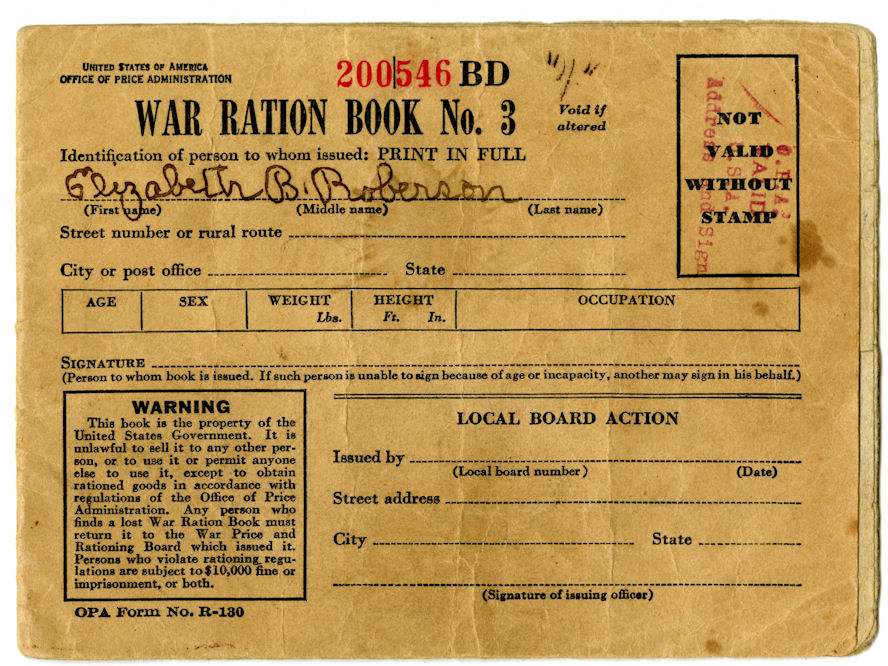 This is a war ration book from World War II, ca. 1943.It belonged to Elizabeth B.
Robertson and was donated to Special Collections in 2008.
This is a war ration book from World War II, ca. 1943.It belonged to Elizabeth B.
Robertson and was donated to Special Collections in 2008.
During World War II, food was in short supply because much of the processed and canned
foods America produced was shipped overseas to our military and Allied troops.It was
also difficult to get fresh foods like milk, vegetables and meat due to gasoline and
tire rationing; transportation of soldiers and war supplies was prioritized, and imported
foods, like coffee and sugar, were hard to come by due to restrictions on importing.
The U.S. government’s Office of Price Administration established a ration system of
rationing that would more fairly distribute foods that were in short supply.During
the war every American was issued ration books periodically that contained removable
stamps.The stamps were designated for certain rationed items, like canned goods, coffee,
meats, sugar, and the like.Shoppers couldn't buy items that were restricted without
also giving the grocer the corresponding ration stamp.Once a shopper's ration stamps
were used up for a month, that person couldn’t buy any more of that item.Most food
shopping during this era was done by women, so wives and mothers were usually the
caretakers of a household's ration books; rationing meant careful meal planning and
wasting as little food as possible.
